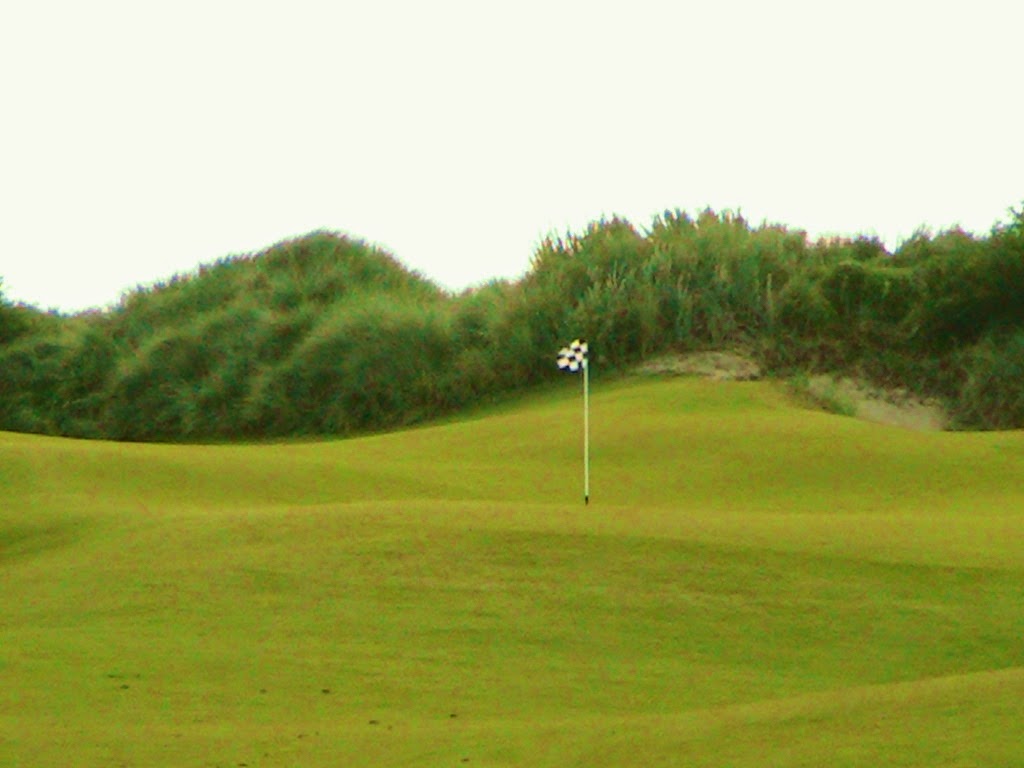Where Technology
Fails: On the Golf Course
Video.
Launch monitors.
3-D Swing Analysis.
None of these are available where it counts: On the Golf Course.
To PLAY THE GAME the PLAYER
must use his/her strengths, abilities, skills, and most importantly – WITS to PLAY
the golf ball around the COURSE.
The COURSE is not flat. It is not artificial turf. Golf is not PLAYED into a net in
a studio.
The PLAY of the GAME is never the
same. It is not consistent, especially
over the course of 4 rounds.
PLAYERS don’t PLAY the same shot to a hole every
time. Because of CONDITIONS, they
CAN’T.
A PLAY in the GAME is a tactic used to NEGOTIATE
THE COURSE CONDITIONS. The
course conditions are never the same, which means the same PLAY won’t work every
time.
Which is… the point.
Suppose you just want to hit it straight. The course designer has thought of this
tactic, and has conspired to design the course NOT to be 18 driving
ranges.
There is fairway.
There is rough. There are straight holes.
And doglegs. There are slopes.
Nothing is flat.
The wind swirls. Or
it’s dead calm.
The landing zone is NEVER flat.
And just when there’s that one day that you’re proud of the
way you PLAYED, the next day is different with different hole
locations.
Or, you’re playing a completely different golf course
altogether!
Everyone fails at some point in golf. We’ve been taught that everything depends on
having a consistent swing, yet just when we think we’ve got it, it doesn’t
work.
Yet we PLAY golf because it is
not the same. It is never the
same.
If it were meant to be played on flat, artificial turf, then
we wouldn’t have COURSES. It would be too
easy. Would you want to play on a flat
surface that is completely covered in artificial turf?
Yet, that’s where the LAUNCH MONITORS, 3-D SWING ANALYSIS, and
VIDEO are used.
A GAME OF GOLF consists of different
conditions, different distances, and different swings. A full swing with a driver is not the same as
that used for such as a 6-iron, a wedge, a pitch, a chip, a sand shot, a putt…
Yet the technology is devised to make the swings THE
SAME. Consistency.
But what we should strive for is not consistency, because
consistency fails when you least expect it to ON THE COURSE.
What we should strive for is… wait for it… PROFICIENCY.
We should strive to know when the conditions say that our
consistent swing will FAIL.
We should strive to know our ON-COURSE GAME, and base
our performance on what happens ON THE COURSE AND NOT ON THE RANGE.
On the range we strive to be consistent and learn to hit the
ball straight. But the COURSE
is designed to screw that up.
Ball above feet? It SHOULD
hook or pull.
Ball below feet? It SHOULD
push or slice.
The ball should not always go straight, yet
we’ve been taught that what we do on the range is what should happen on the
COURSE!
And it doesn’t. And
it shouldn’t.
But we love the GAME OF GOLF because it
is NOT
the driving range.
Humbling? No kidding. Fun? ABSOLUTELY!
-- Bob Duncan, PGA Golf Professional
 That IS the goal.
That IS the goal.

.jpg)











